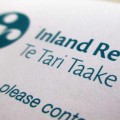
New Investment Boost Rules: What They Mean for Your Business
Categories
The Government’s 2025 Budget has introduced the “Investment Boost”, a new tax incentive aimed at encouraging businesses to invest and grow.
Here’s what’s changing, how it might apply to you, and where the opportunities are.
What’s the Investment Boost?
From 22 May 2025, businesses can claim an immediate 20% tax deduction on the cost of new qualifying assets. This is on top of normal depreciation, giving you a bigger upfront tax saving and a boost to cash flow. This deduction is claimed through your business’s tax return. It generally, doesn’t increase the overall deductions you can receive but it brings forward deductions, helping cashflow.
What Assets Are Eligible?
You can claim the Investment Boost on:
- New machinery, equipment, tools, and work vehicles
- New commercial and industrial buildings (even though they usually have a 0% depreciation rate)
- Improvements to existing commercial buildings – including things like seismic upgrades and ventilation
- Land improvements in the primary sector (e.g. fencing, drainage, feed pads, bores and effluent ponds)
- Second-hand assets imported into NZ and used for the first time (as long as they’re new to the country)
You can’t claim it on:
- Assets already used in NZ
- Residential buildings or land
- Fixed-life intangible property (like software licences or patents)
How It Works
The 20% deduction applies in the year the asset is first used or ready to use provided this is, generally, after 22 May 2025. The remaining 80% is depreciated as usual. If the asset is later sold for more than its book value, some of the tax benefit may be clawed back. This is the same as regular depreciation.
Example:
For example, if you buy a $100,000 asset in October 2025 at a 10% depreciation rate:
- $20,000 immediate deduction
- $4,000 depreciation on the remaining $80,000
- Total deduction in Year 1: $24,000 (instead of $5,000 under current rules). Assuming a tax rate of 28% this results in a tax saving in Year 1 of $5,320. It also means the deduction in Year 2 is $1,900 less than the current rules, resulting in $532 more tax payable in Year 2 than under the current rules.
Why It Matters
- Better cash flow: a larger deduction up front can ease pressure and support reinvestment but remember it generally only brings forward deductions, not increases them.
- Support for property investment: new commercial buildings and improvements now qualify for tax deductions
- No cap: there’s no limit on how much you can claim or how many assets you include
- Timing is key: even assets under construction before 22 May can qualify if first used after that date
What to Do Now
- Look at your capital plans. Can you bring purchases forward?
- Review any building work. There may be new tax savings available.
- Timing is everything. Let’s chat about how your business could benefit.
Get in touch if you want help applying the new rules to your situation.

Craig McCallum
PrincipalCraig is an expert in reviewing and analysing client’s financial statements and tax returns and provides specialist taxation advice, you can always expect Craig to have his finger on the taxation pulse.

 Ashley Burdon
Ashley Burdon
 Rachel Lock
Rachel Lock
 Craig McCallum
Craig McCallum
